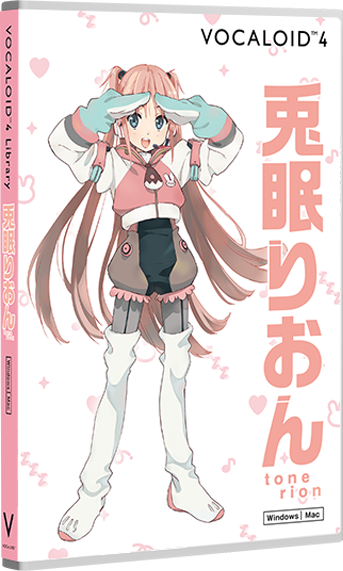

- #Vocaloid 4 characters list full#
- #Vocaloid 4 characters list software#
- #Vocaloid 4 characters list professional#
When entering lyrics, the editor automatically converts them into Vocaloid phonetic symbols using the built-in pronunciation dictionary. The Score Editor is a piano roll style editor to input notes, lyrics, and some expressions. It works standalone (playback and export to WAV) and as a ReWire application or a Virtual Studio Technology instrument (VSTi) accessible from a digital audio workstation (DAW). The system supports three languages, Japanese, Korean, and English, although other languages may be optional in the future. If a Vocaloid 2 product is already installed, the user can enable another Vocaloid 2 product by adding its library. There is basically no difference in the Score Editor and the Synthesis Engine provided by Yamaha among different Vocaloid 2 products. The Synthesis Engine receives score information from the Score Editor, selects appropriate samples from the Singer Library, and concatenates them to output synthesized voices. The main parts of the Vocaloid 2 system are the Score Editor (Vocaloid 2 Editor), the Singer Library, and the Synthesis Engine. (based on Fig.1 on Kenmochi, Ohshima &, Interspeech 2007) They cannot naturally replicate singing expressions like hoarse voices or shouts.
#Vocaloid 4 characters list software#
The Vocaloid and Vocaloid 2 synthesis engines are designed for singing, not reading text aloud, though software such as Vocaloid-flex and Voiceroid have been developed for that. " Singing Articulation" is explained as "vocal expressions" such as vibrato and vocal fragments necessary for singing. Initially, Vocaloid's synthesis technology was called "Frequency-domain Singing Articulation Splicing and Shaping" ( 周波数ドメイン歌唱アーティキュレーション接続法, Shūhasū-domain Kashō Articulation Setsuzoku-hō) on the release of Vocaloid in 2004, although this name is no longer used since the release of Vocaloid 2 in 2007. The Vocaloid system can produce the realistic voices by adding vocal expressions like the vibrato on the score information. Vocaloid's singing synthesis technology is generally categorized into the concatenative synthesis in the frequency domain, which splices and processes the vocal fragments extracted from human singing voices, in the forms of time-frequency representation. Artists such as Mike Oldfield have also used Vocaloids within their work for back up singer vocals and sound samples. also have released compilation albums featuring Vocaloids. Japanese record label Exit Tunes of Quake Inc. Japanese musical groups such as Livetune of Toy's Factory and Supercell of Sony Music Entertainment Japan have released their songs featuring Vocaloid as vocals.

#Vocaloid 4 characters list professional#
The software is intended for professional musicians as well as casual computer music users.

Vocaloid 3 has added support for Spanish for the Vocaloids Bruno, Clara and Maika Chinese for Luo Tianyi, Xin Hua and Yanhe and Korean for SeeU. The software was originally only available in English starting with the first Vocaloids Leon, Lola and Miriam by Zero-G, and Japanese with Meiko and Kaito made by Yamaha and sold by Crypton Future Media. These avatars are also referred to as Vocaloids, and are often marketed as virtual idols some have gone on to perform at live concerts as an on-stage projection. As such, they are released under a moe anthropomorphism. Each is sold as "a singer in a box" designed to act as a replacement for an actual singer. Various voice banks have been released for use with the Vocaloid synthesizer technology. The software can change the stress of the pronunciations, add effects such as vibrato, or change the dynamics and tone of the voice. A piano roll type interface is used to input the melody and the lyrics can be entered on each note. To create a song, the user must input the melody and lyrics. It uses synthesizing technology with specially recorded vocals of voice actors or singers. The software enables users to synthesize "singing" by typing in lyrics and melody and also "speech" by typing in the script of the required words. Backed by the Yamaha Corporation, it developed the software into the commercial product "Vocaloid" that was released in 2004.
#Vocaloid 4 characters list full#
Its signal processing part was developed through a joint research project led by Kenmochi Hideki at the Pompeu Fabra University in Barcelona, Spain, in 2000 and was not originally intended to be a full commercial project. Vocaloid ( ボーカロイド, Bōkaroido) is a singing voice synthesizer software product. Japanese, English, Korean, Spanish, Chinese, Catalan


 0 kommentar(er)
0 kommentar(er)
